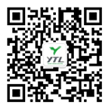Single-phase energy meter products can be classified into various types based on their working principles, functional characteristics, and application scenarios. Here are some common types of single-phase energy meter products.
Mechanical Single-phase Energy Meter
This is the earliest type of electric meter, which measures energy consumption through mechanical structures (such as a rotating disk).
Advantages: Simple structure, relatively low price.
Disadvantages: Accuracy may be affected by mechanical wear and aging, and the functionality is relatively limited.

Electronic Single-phase Energy Meter
Using electronic technology for electric energy measurement offers higher accuracy and stability.
Advantages: Low power consumption, small starting current, wide load range, capable of measuring both forward and reverse energy, and equipped with various additional features (such as remote communication, data storage, etc).
Disadvantage: Compared to mechanical electric meters, the price may be slightly higher.
Smart Single-Phase Energy Meter
Smart electric meters are an upgraded version of electronic electric meters, equipped with more intelligent features.
Advantages: Supports remote meter reading, prepaid billing, tiered electricity pricing, and electricity monitoring, making it convenient for users to manage and control their electricity usage.
Disadvantages: relatively high price and requires compatibility with the corresponding smart grid system.
Multifunctional Single-phase Energy Meter
This type of electric meter not only has basic energy measurement functions but also includes various additional features such as harmonic analysis, power factor measurement, and demand measurement.
Advantages: Rich in features, suitable for situations with high requirements for power quality.
Disadvantages: Higher price and requires professional installation and maintenance.
Prepaid Single-phase Energy Meter
This type of electric meter allows users to pay in advance before using electricity, controlling consumption through a built-in prepaid system.
Advantages: Convenient for users to manage electricity expenses, avoiding situations of power outages due to unpaid bills.
Disadvantages: Requires users to recharge in advance, and there may be a certain level of operational complexity.

Din Rail Single-phase Energy Meter
This type of electric meter is usually installed using a rail mounting method, making it convenient for installation and removal in distribution cabinets and similar settings.
Advantages: Easy to install, space-saving, and suitable for situations that require frequent changes or movement.
Disadvantages: Compared to other types of electric meters, it may prioritize ease of installation at the expense of some functionality.
Multi-tariff Single-phase Energy Meter
This type of electric meter supports setting different electricity prices according to different time periods (such as peak, flat, and valley) to encourage users to use electricity rationally.
Advantages: Helps to implement time-of-use electricity pricing policies and promotes energy conservation and emission reduction.
Disadvantage: Users need to understand and adapt to different electricity pricing periods.
There are various types of single-phase energy meters, and users should choose the appropriate type based on their actual needs. When purchasing, in addition to considering the price, attention should also be paid to aspects such as product accuracy, stability, functional features, and after-sales service.

 English
English 中文简体
中文简体



.jpg?imageView2/2/w/500/h/500/format/png/q/100)










